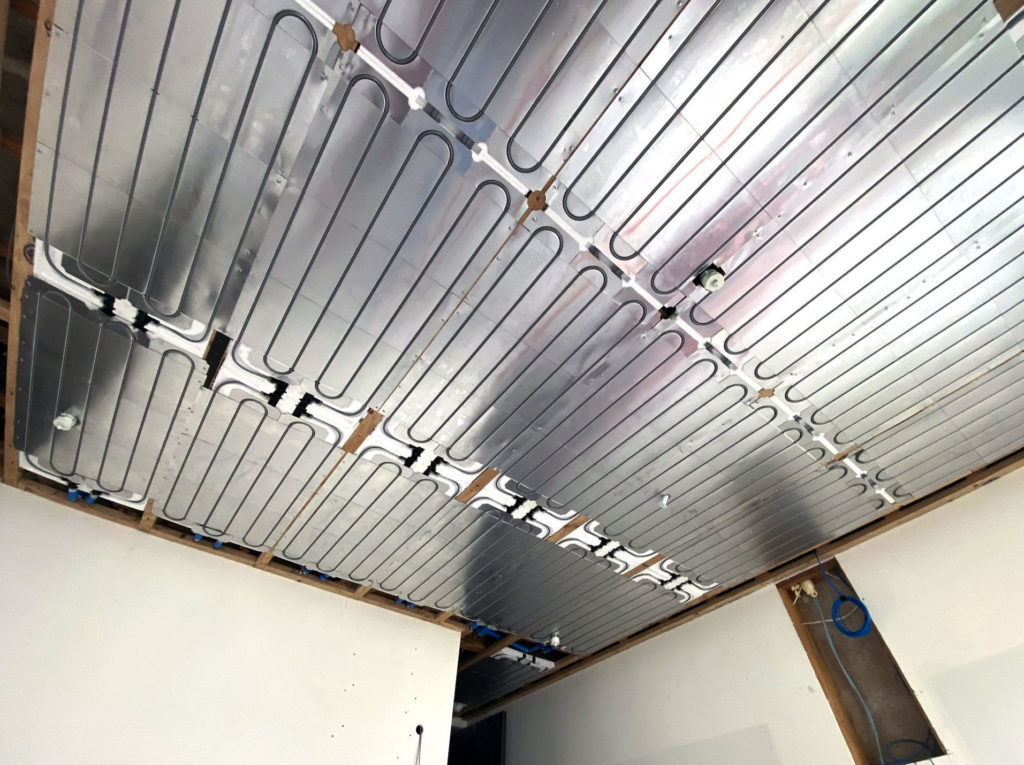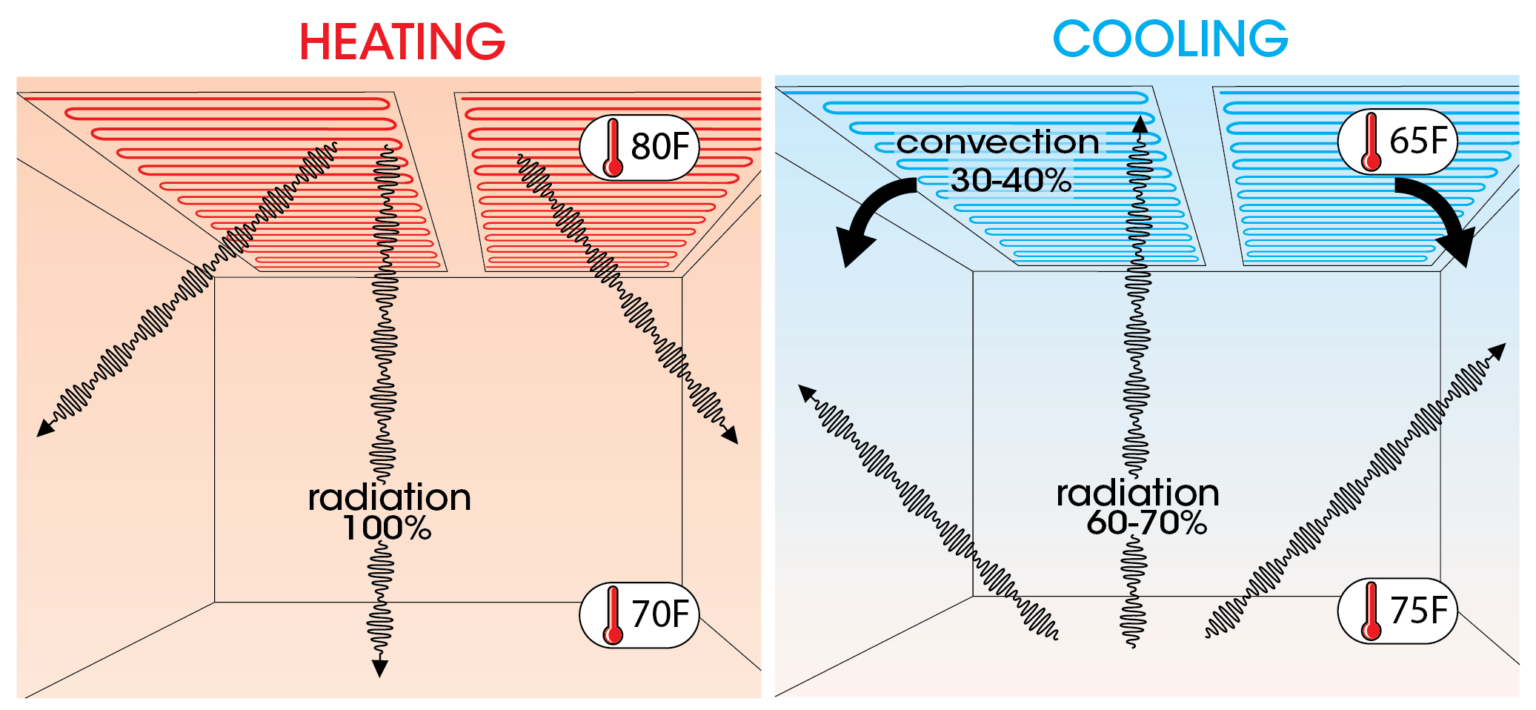

When considering the question of heating from the ceiling, it’s essential to acknowledge the fundamental principle that hot air is what naturally rises, not heat. However, the dynamics of heat transfer extend beyond the simple ascent of hot air.
Why does hot air rise?
This phenomenon is a result of the buoyancy effect, where warmer air becomes less dense and ascends while cooler air descends.

Thermal radiation plays a pivotal role in understanding how heating from the ceiling can be effective. Unlike convection, which involves the movement of air, thermal radiation does not adhere to specific directions such as up or down, left or right. Instead, it follows a singular path from hot to cold, irrespective of gravitational forces.


Drawing a parallel to the sun’s influence provides a useful analogy. When sunlight reaches the Earth, the warmth we experience is a result of thermal radiation. This radiation travels through the vacuum of space without relying on convection currents. Similarly, heating from the ceiling can leverage thermal radiation to distribute warmth evenly throughout a space.
In practical terms, implementing ceiling heating systems involves the emission of thermal radiation from the ceiling to the surrounding surfaces and objects. This radiant heat, akin to the sun’s thermal radiation, warms the occupants and objects in the room directly, creating a comfortable and efficient heating solution.
In conclusion, while hot air indeed has a tendency to rise, the comprehensive understanding of heat transfer mechanisms, particularly thermal radiation, allows for innovative approaches such as ceiling heating. By harnessing the principles of radiant heat, we can achieve a more efficient and uniform distribution of warmth within a space, transcending the limitations imposed by the natural ascent of hot air.
How Does a Radiant Ceiling Compare to a Radiant Floor?
Despite the widespread success and satisfaction with radiant floor heating, there are compelling reasons to favor radiant ceilings. Recent advancements in radiant ceiling technology have simplified installations, dispelling the myth that heat only rises. Here are key advantages of radiant ceilings:
Radiant Ceiling
- Low Thermal Mass
- More Extreme Surface Temperature
- Unobstructed Radiant Surface
- Less Radiant Surface Required
- Easier Installation
- Cooling Convection Cycle
- Does Not Require Supplemental Cooling in Ideal Conditions
Radiant Floor
- Warm Feet Through Direct Contact
- Heating Convection Cycle
For a more in depth comparison of radiant ceilings and floors, refer to this article:
How Does Radiant Ceiling Heating and Cooling Work?